Differences between morori and zaru, even the types of Shinshu soba! Deep <Soba world>
2020.2.13

Familiar to us History of "station soba" And A rare soba called "dark soba" , Etc., have been featured frequently in this "acure Lounge" < Soba > .
However, there is a deepness that we still do not know about this <nearby world>!
For example, the difference between “seiro”, “mori” and “sapuru”. What kind of soba is "Shinshu soba", which is famous for noodles in Nagano?
Trial about <Soba>, 2020 version, start!
How are they different?
The thin noodle-shaped soba like today is popular in the Edo period ( Here ). It is said that the origins of “seiro”, “mori” and “zaru” were around that time.
First, "Seiro Soba".
"Seiro" is written as "steam basket" and means steaming steamed buns.

Such a square shape (on the photo) and ...

Such a round object is a tool called "seiro".
“Seiro Soba” was originally started by providing steamed soba noodles with this steam in the rising steam.

In the middle of Edo period, besides eating the soba served in a bowl in another bowl of soup,

“Bukkake,” a trend of noodle soup with noodle soup.
The name "Mori Soba" has appeared to distinguish this soup from "Bukkake Soba", which is a type of soba with soup and soup. Serving "Mori soba" can be done with any dish, bowl, or color. That is to “fill” the soba in some kind of vessel.
So ... "Seiro soba" is also a kind of "Mori soba".
Then, what is "Zaru soba"?

"Zaru soba" devised by a certain soba shop in Edo.
It seems to have differentiated itself from other stores by arranging it on "Takezaru" instead of a dish or a color plate, but this is a huge hit in a blink of an eye! Other stores began to imitate, and "Zaru soba" gained citizenship.
Although the origins of each are different, "seiro", "mori" and "zaru" all end up with "soba on something" = "morisoba"?
Sure, no matter which one you ask these days ...

Like this,

Like this, "Zaru" and "Mori" are displayed on a container that imitates the color of the sea, and on the contrary, I ordered "Seiro" and "Mori" and came out with bamboo shoots ... Also.
Yes, conclusion, There is no big difference between "zaru", "mori" and "seiro" in modern times It is!
There is a theory that "the seaweed is on" zaru soba! ", But this also varies from store to store. It doesn't seem to be necessarily "zaru = nori".
“Seiro soba,” which should use steamed soba noodles, has already started serving hot soba noodles in hot water type vessels since the late Edo period.
In addition, the reason is "to raise the volume of the vessel to show a large amount."
It is said that it began with using a "snowboard" on a bowl-shaped vessel.

By the way, in the past it was said that there was a difference in the taste of soba soup in each of the “seiro”, “mori” and “zaru”, and some shops still make a difference in the amount of soba soup and noodles.
When both "Mori" and "Zaru" are on the menu, the appearance of nori, the taste of soup, and the amount of noodles are different. please check it!
Speaking of soba "Shinshu"! But why?

Speaking of the famous locality of <Soba>, now and in the past, Shinshu!
"Shinshu soba" is a general term for soba made in Nagano prefecture.
For buckwheat cultivation, the climate of high cold regions is perfect. Because of the large temperature difference between day and night, delicious buckwheat berries grow.
In Nagano prefecture, this cultivation condition is met, so you can harvest high-quality buckwheat in various parts of the prefecture.
Shinshu soba has been famous all over Japan for a long time, and the reason why it is still loved is because of its location.
There are various types of "Shinshu soba"!

If you check out "Let's go to Shinshu and eat delicious soba!", You will notice that there are many "●● soba" in each area.
Because it is a famous locality of soba, noodles and seasonings have regional characteristics.
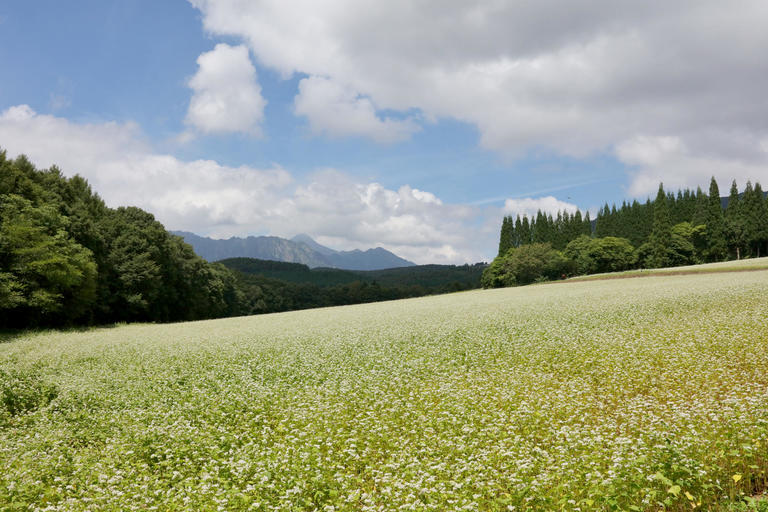
For example, “Kirishita soba,” also called the highest peak of soba, features high-quality soba nuts.
"Kirishita soba" means soba grown under "mist". This refers to buckwheat cultivated in high altitude areas where fog appears, even in high cold regions.
Myoko, Kurohime, Togakushi, Kiso, etc. in Shinshu are known as production areas.
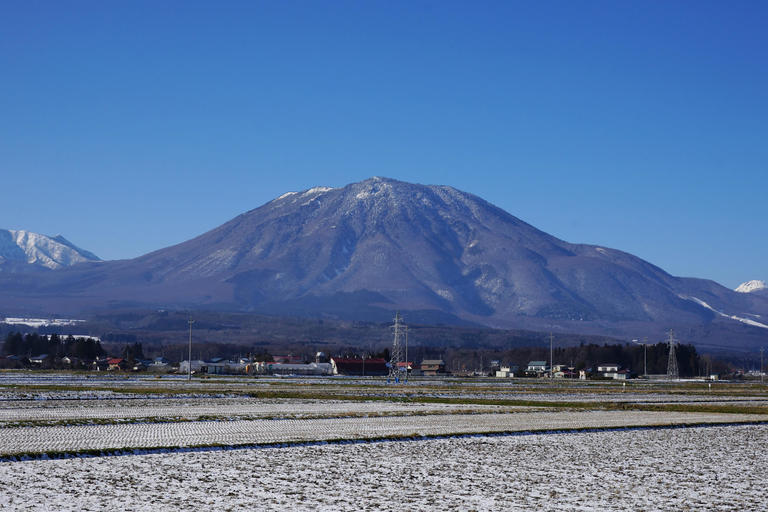
Some, such as Togakushi soba, are known by the name of the place of production.
Togakushi was once a village in Nagano City. Even now, it is an area where place names such as Togakushi remain.
"Togakushi soba" uses local soba noodles. "Grind" powder containing the outer shell is used.

Togakushi soba is called "Japan's three largest soba" along with "Wanko soba" in Iwate prefecture and "Izumo soba" in Shimane prefecture. The feature is that the noodles are bundled little by little without draining the water, and served in a bamboo sashimi.
By the way, "Kirishita soba" and "Togakushi soba" can be eaten outside Nagano prefecture, but there is "Shinshu soba" which is rarely found elsewhere and is unique to the prefecture!
Oshibori soba, a local dish from the Hokushin region of Nagano Prefecture, is one of them.

"Oshibori soba" refers to grated hot radish, melted Shinshu miso, and add soba.
Nagano is not facing the sea and is surrounded by mountains.
This kind of eating was born because the ingredients for soup stock such as kelp and bonito were not available.
In addition, Shinshu has a lot of rare soba unique to the area, such as “Frozen soba” and “Tomikura soba”.
It would be fun to travel in search of your favorite "Shinshu soba"!
Before traveling, Check the type of soba and the soba you want to eat Please go out.
Various kinds of "buckwheat berries"! What is "Tartar Soba"?
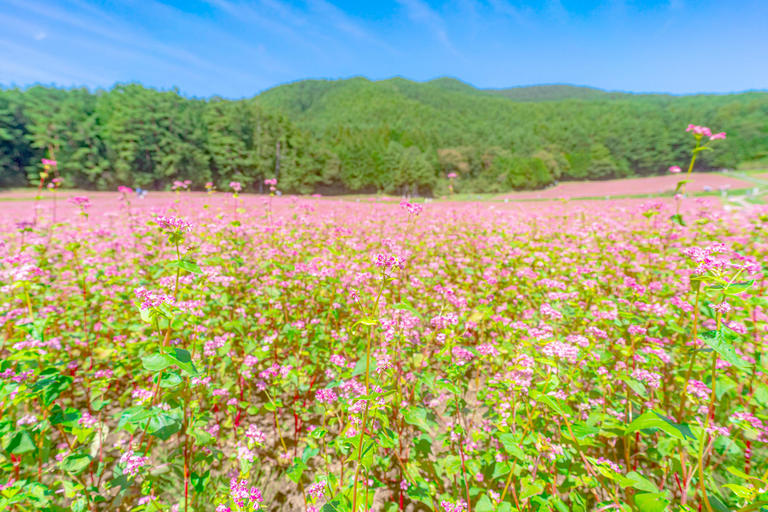
There are various types of "Shinshu soba".
In fact, there are several types of "buckwheat berries" themselves!
Soba flowers are usually white.
However, there are also "red soba", which blooms red flowers, and flowers that bloom slightly greenish on white. That is "Tartar Soba".
"Tartar soba" is called "bitter soba" and was once considered unsuitable for noodle making.
However, in recent years, it has been spotlighted from the viewpoint of nutritional value and so on!
It was also used for tea, and its name became known.

"Tartar soba" which can be enjoyed in ekinaka now.
that is, < acure made > "【Tea】Shinsyu soba cha" is.
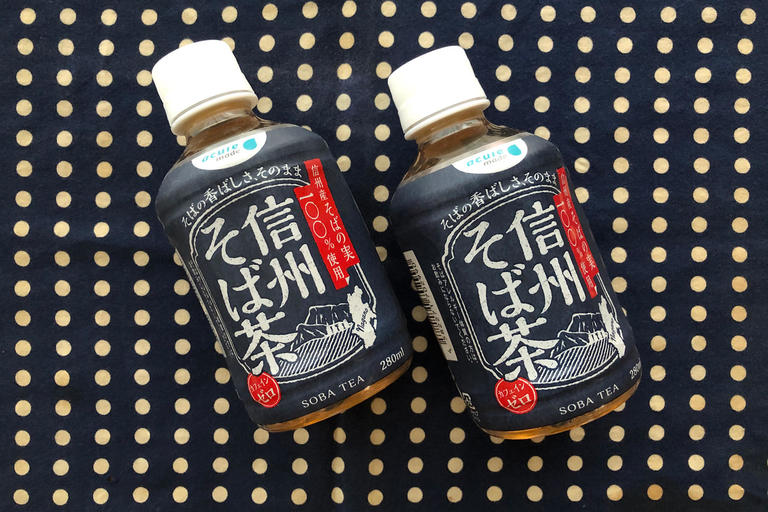
"【Tea】Shinsyu soba cha" is a blend of tartary buckwheat and ordinary buckwheat.
Of course, 100% of the fruit from both sides is from Shinshu.
HOT, COLD, and at room temperature. The secret of the taste is always "delicious buckwheat"!
The sweetness, astringency, and aroma of "Shinshu soba" are emphasized, and the deliciousness that comes to fruition after studying dozens of tastes. acure's unique “stick-to-stick” attitude has sought out the best ratio. (The secret story behind the development of “ 【Tea】Shinsyu soba cha ” Here ! )
“ 【Tea】Shinsyu soba cha ” is a companion when you eat delicious soba!
Japanese food loved since the Edo period < Soba > Please enjoy the world of.
COLUMN
Match any scene throughout the season! acure made “ 【Tea】Shinsyu soba cha ”
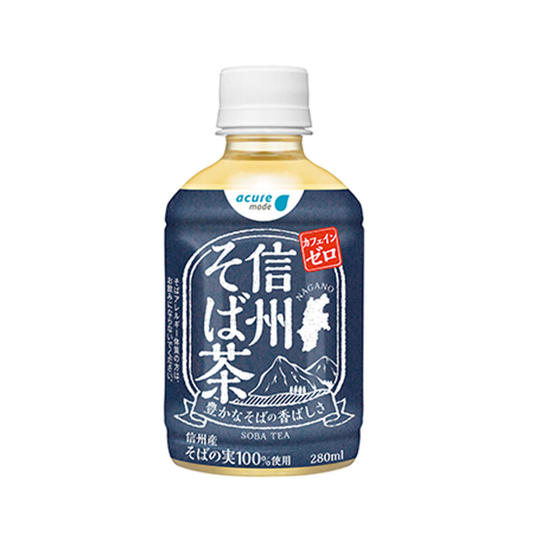
Now < acure > Vending machines are hot for Japanese tea!
You can enjoy two flavors of green tea "【Japanese green tea】Asa no chaji", "Shinnosuke Genmaicha" using hot rice, and "【Tea】Shinsyu soba cha" < acure made > A variety of Japanese tea is available!
The “ 【Tea】Shinsyu soba cha ” series consists of two types of photos: “ 【Tea】Shinsyu soba cha(Autumn and Winter only)” and “ 【Tea】Shinsyu "Dattan" soba cha(Spring and Summer only)”. You can enjoy "Shinshu soba savoryness" with drinks throughout the four seasons, along with lunch, snacks to enjoy Japanese sweets.
Speaking of Japanese tea, there are many green and warm color packages, but this 【Tea】Shinsyu soba cha is a bit different. Yes, I imagine the "Aizen noren" often found in soba shops.
Feel free to pass through the curtains of a familiar soba shop < Soba > Please try incorporating 【Tea】Shinsyu soba cha into your everyday life.






